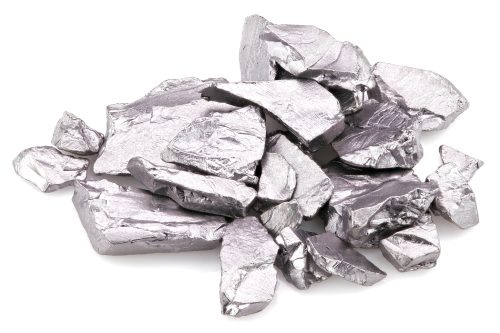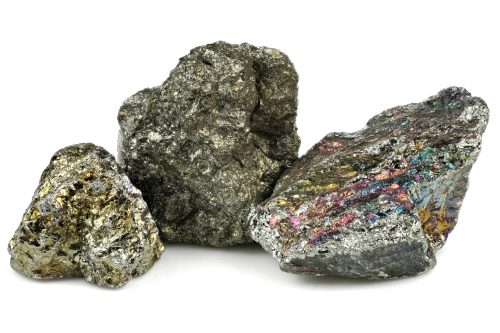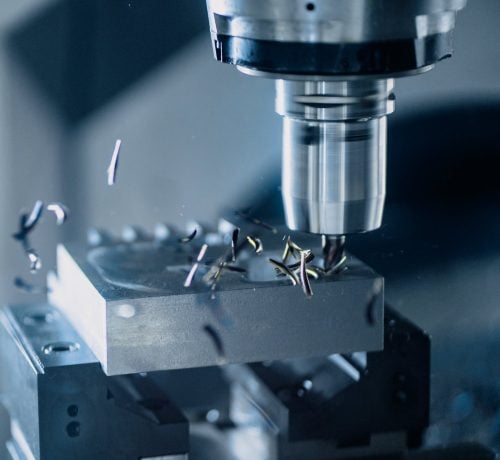Tantalum and Niobium: Similarities and Differences
Tantalum and niobium are two chemical elements that belong to the group of transition metals in the periodic table. They have many similarities in their physical and chemical properties, but also some notable differences. Here we will compare and contrast these two elements and explore their applications and uses.

Similarities
Tantalum and niobium are both soft, ductile, and lustrous metals with high melting and boiling points. They are also highly resistant to corrosion by acids and have good thermal and electrical conductivity. They have similar atomic structures, with only one electron difference in their outermost shells. They are often found together in nature, in minerals such as columbite, tantalite, pyrochlore, and loparite. They are also difficult to separate from each other due to their similar chemical behavior.
Both elements have a wide range of applications in various industries. They are used as additives or alloys in steels and superalloys to improve their strength, toughness, ductility, and resistance to high temperatures and corrosion. They are also used in capacitors, which are electronic components that store electric charge and energy. Tantalum capacitors have a high capacitance per volume and are widely used in portable devices, computers, and automotive electronics. Niobium capacitors have a lower capacitance but a higher voltage rating and are used in power supplies and converters.
Both elements also have some specialized uses that exploit their unique properties. For example, niobium-tin alloys are used as superconducting magnets for medical imaging devices, particle accelerators, and fusion reactors. Tantalum pentoxide is used as a coating material for glass lenses with a high refractive index, which enhances their optical performance.

Differences
Despite their similarities, tantalum and niobium also have some significant differences in their physical and chemical properties. For instance, tantalum is much denser than niobium, with a density of 16.65 g/cm3 compared to 8.57 g/cm3 for niobium. Tantalum also has a higher melting point (2996 °C) and boiling point (5425 °C) than niobium (2477 °C and 4744 °C respectively). Tantalum is slightly harder than niobium, with a Mohs hardness of 6.5 versus 6 for niobium.
Another difference between the two elements is their availability and price. Tantalum is much rarer than niobium, with an estimated crustal abundance of 2 ppm versus 20 ppm for niobium. Tantalum is also more expensive than niobium, with raw ore prices sometimes reaching ten times the price per pound of niobium ore. The supply of tantalum is also more volatile than that of niobium, due to political instability and environmental issues in some of the major producing countries such as Congo, Rwanda, Brazil, and Australia. It’s important to note that responsible tantalum suppliers such as Admat do not supply metals that originated in conflict areas such as the Congo unless the raw materials meets the stringent conditions determined by the RMI (Responsible Minerals Initiative) and the RMAP (Responsible Minerals Assurance Process). This program ensures responsible sourcing of ore in high risk and conflict areas and supports local economies. https://www.admatinc.com/resources/raw-materials-ethics-policy/
Tantalum and niobium are two remarkable elements that share many similarities but also have some distinct differences. They have a wide range of applications in various fields such as metallurgy, electronics, optics, medicine, and science. They are both valuable resources that contribute to the advancement of technology and human welfare.
Breaking Down the Best: Tantalum, Niobium, Tungsten, and Molybdenum Compared
 Tantalum, niobium, tungsten, and molybdenum are all refractory metals, which means they have high melting points and are highly resistant to corrosion and wear. However, they have different physical properties that make them more suitable for certain applications.
Tantalum, niobium, tungsten, and molybdenum are all refractory metals, which means they have high melting points and are highly resistant to corrosion and wear. However, they have different physical properties that make them more suitable for certain applications.
Comparison of refractory metal’s properties:
Density: Tungsten has the highest density of the four metals, at 19.3 g/cm³, followed by tantalum (16.6 g/cm³), niobium (8.57 g/cm³), and molybdenum (10.2 g/cm³).
Melting Point: Tungsten has the highest melting point of the four metals, at 3,422 °C, followed by tantalum (3,020 °C), molybdenum (2,623 °C), and niobium (2,468 °C).
Machinability: Niobium is the easiest to machine of the four metals, followed by tantalum, molybdenum, and tungsten. Tungsten, in particular, is very difficult to machine due to its high hardness and brittleness. Tungsten Heavy Alloywould be an alternative with improved machinability.
Corrosion Resistance: Tantalum has excellent corrosion resistance, especially in acidic environments, making it well-suited for chemical processing and medical implants. Niobium is also highly corrosion resistant, while tungsten and molybdenum are more prone to corrosion.
Price: Tantalum is the most expensive of the four metals, followed by niobium, tungsten and molybdenum.
Thermal Conductivity: Tungsten has the highest thermal conductivity of the four metals, followed by molybdenum, tantalum, and niobium. This property can be important for heat management in some applications.
Ductility: Niobium and tantalum are both highly ductile, which means they can be drawn into wires or formed into various shapes without breaking. Tungsten and molybdenum are less ductile, but they have excellent resistance to bending and stretching.
Electrical Conductivity: Tungsten and molybdenum have lower electrical conductivity than tantalum and niobium. This can be important for applications where electrical resistance is required, such as heating elements.
Appearance: Niobium has a unique surface coloration when anodized, and it can be anodized to produce a wide range of colors. This makes it popular for use in jewelry and other decorative applications.
Environmental Impact: Tungsten and molybdenum are both more abundant than tantalum and niobium, and they are often mined from countries with fewer environmental regulations. This can make them a more environmentally friendly choice for some applications.
When choosing a material for a specific application, the following factors should be considered:
- Operating environment: The operating temperature and chemical environment will determine the level of corrosion resistance required.
- Mechanical properties: The required strength and toughness of the material should be considered.
- Machinability: If the part requires machining, the ease of machining should be considered.
- Cost: The cost of the material should be balanced against its suitability for the application.
Applications where each of these metals is commonly used:
- Tantalum: Chemical processing, medical implants, and electronic components.
- Niobium: Aerospace components, superconductors, and medical implants.
- Tungsten: Electrical contacts, welding electrodes, and radiation shielding.
- Molybdenum: Aerospace components, heating elements, and glass melting electrodes.
| Admat’s Refractory Metals Max Temp in Open Air w/ Limited Oxidation Risk | |
| Metal | Maximum Temperature in Air |
| Tantalum | 500-800°C |
| Niobium* | Up to XXX °C |
| Tungsten | Up to 400°C |
| Molybdenum | Up to 500°C |
*As an alternative to niobium, Admat’s Niobium Hafnium Titanium (C-103) has a much higher operating temperature in open air.
Note: These temperatures are approximate and can vary depending on factors such as the purity of the material, the surface condition, and the environment in which it is being used. It’s important to consult with a materials engineer or other expert to determine the most appropriate materials and operating conditions for a given application.
Overall the choice of material depends on the specific requirements of the application. Tantalum and niobium are good choices for applications that require high corrosion resistance, while tungsten and molybdenum are better suited for applications that require high strength, high melting point, or electrical resistance.

